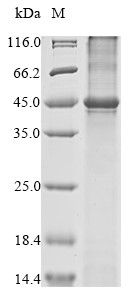GPCRs Class A
🧪 CCR5-708R
Source: Mammalian Cells
Species: Rhesus macaque
Tag: His
Conjugation:
Protein Length:

🧪 CHRM1-859R
Source: Mammalian Cells
Species: Rhesus macaque
Tag: His
Conjugation:
Protein Length:

🧪 CHRM3-860R
Source: Mammalian Cells
Species: Rhesus macaque
Tag: His
Conjugation:
Protein Length:

🧪 CHRM4-861R
Source: Mammalian Cells
Species: Rhesus macaque
Tag: His
Conjugation:
Protein Length:

🧪 CHRM5-862R
Source: Mammalian Cells
Species: Rhesus macaque
Tag: His
Conjugation:
Protein Length:

🧪 CNR1-947R
Source: Mammalian Cells
Species: Rhesus macaque
Tag: His
Conjugation:
Protein Length:

🧪 CX3CR1-1103R
Source: Mammalian Cells
Species: Rhesus macaque
Tag: His
Conjugation:
Protein Length:

🧪 CXCR4-1115R
Source: Mammalian Cells
Species: Rhesus macaque
Tag: His
Conjugation:
Protein Length:

🧪 DRD1-1329R
Source: Mammalian Cells
Species: Rhesus macaque
Tag: His
Conjugation:
Protein Length:

🧪 DRD3-1330R
Source: Mammalian Cells
Species: Rhesus macaque
Tag: His
Conjugation:
Protein Length:

🧪 EDNRA-1380R
Source: Mammalian Cells
Species: Rhesus macaque
Tag: His
Conjugation:
Protein Length:

🧪 GRPR-1981R
Source: Mammalian Cells
Species: Rhesus macaque
Tag: His
Conjugation:
Protein Length:

🧪 HRH2-2143R
Source: Mammalian Cells
Species: Rhesus macaque
Tag: His
Conjugation:
Protein Length:

🧪 HRH3-2144R
Source: Mammalian Cells
Species: Rhesus macaque
Tag: His
Conjugation:
Protein Length:

Class A GPCRs are the largest and most varied group, making up about 48% of all GPCR receptors. This class includes receptors for light, like rhodopsin, as well as key neurotransmitter receptors for dopamine and serotonin, and hormone receptors, such as adrenergic receptors. What sets Class A apart is its structure: these receptors have a short N-terminus and a specific Asp-Arg-Tyr (DRY) motif in their third transmembrane segment, which plays a crucial role in activating G-proteins. By focusing on Class A and its essential functions, we support research and innovation in areas spanning vision, mental health, and hormone-related processes.


